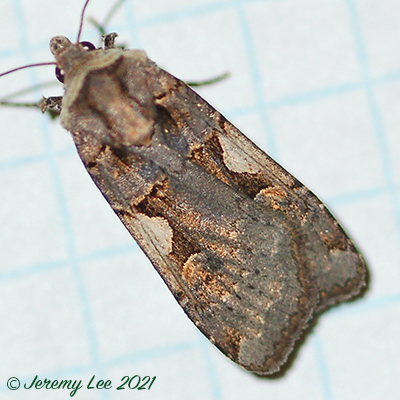
 |
|
Scientific Classifications explained » Amphibians » Ants » Aphids » Bees » Beetles » Birds » Bugs » Butterflies » Caterpillars » Damselflies » Dragonflies » Earwigs » Flies » Frog/Leafhoppers » Fungi » Galls » Grasshoppers » Harvestmen » Hoverflies » Lacewings » Ladybirds » Leaf Mines » Lichens » Mammals » Millipedes » Mosses » Moths » Sawflies » Slugs » Snails » Spiders » Trees & Shrubs » Wasps » Wild Flowers » Woodlice » Postboxes |
UK Nature > Moths > Xestia c-nigrum

Scientific Name: Xestia c-nigrum Common Name: Setaceous Hebrew Character Xestia c-nigrum, more commonly known as the Setaceous Hebrew Character, has a wingspan of 35 - 42 mm and is a distinctive species which should not be difficult to identify. Habitat is gardens, woodland, heathland and marshes. In the southern half of its range, there are two broods, flying in small numbers in May and June, but far more commonly in August and September. In the north there is just one generation, flying in July and August. The population is sometimes reinforced by immigration in the autumn. The larvae feed on a variety of herbaceous plants, but especially Stinging Nettle (Urtica dioica). Widely distributed throughout Britain, sometimes commonly. In a recent survey to determine the status of all macro moths in Britain this species was classified as common. |
|

https://www.uknature.co.uk is a website dedicated to showing the immense diversity of UK nature and wildlife. Our vast range of habitats, from lowland arable to snow covered mountains, from storm-ravaged coastlines to peaceful inland freshwater lakes and rivers, from dry, sandy heaths to deciduous and coniferous forests, all these habitats contribute to the abundance of UK nature. We have wild birds in huge numbers either residing or visiting our shores (597 recorded species as at July 2013) and we must also not forget the humble back garden with its grass lawns, flower beds filled with nectar rich flowers, shrubs and trees, all designed to attract huge numbers of insects such as bees, moths, butterflies and hoverflies; and finally the small ponds which provide safe havens for frogs, toads, newts and even slow worms and grass snakes. www.uknature.co.uk is the showcase for my personal passion, photographing uknature in all its glory. I sincerely hope you all enjoy the fruits of my labours. This site and all images contained therein is © Jeremy Lee 2004 - 2025. All Rights Reserved. Site design by Jeremy Lee. Site development & IT Support by Stuart Lee. |